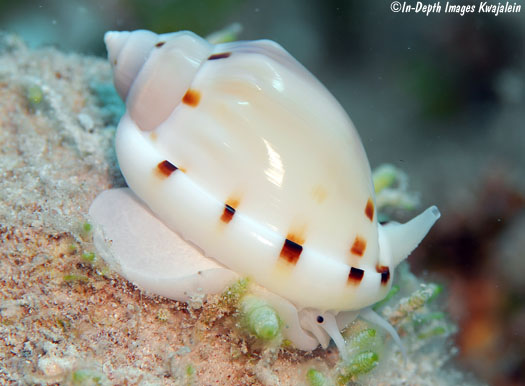
Similar in appearance to Casmaria erinaceus, C. ponderosa tends to be smaller. Most specimens are found as empty shells on sandy lagoon interisland reefs. Often living specimens can be seen crawling on the surface of the sand at night, frequently chasing or eating burrowing echinoids. Sometimes they are even out in the daytime, usually in patches of lagoon Halimeda algae. Occasionally on these sandy reefs, we find spots where dozens of fresh, empty but intact shells are literally piled up, all in a patch less than half meter across. Although we have not caught a predator in the act, we envision a sand-dwelling octopus (of which there are several) out at night gathering these shells up in its tentacles and settling down in one spot to pluck out the animals like escargot. If this is accurate, we'd sure like to see it one night.

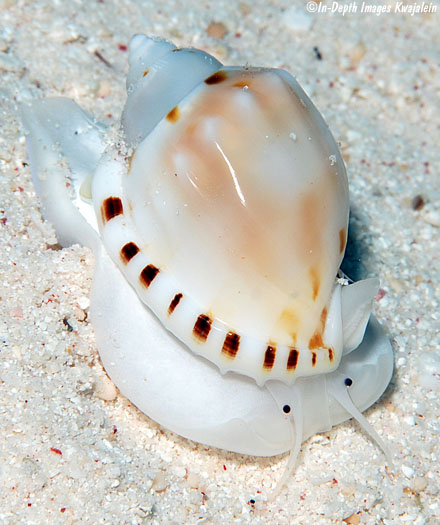
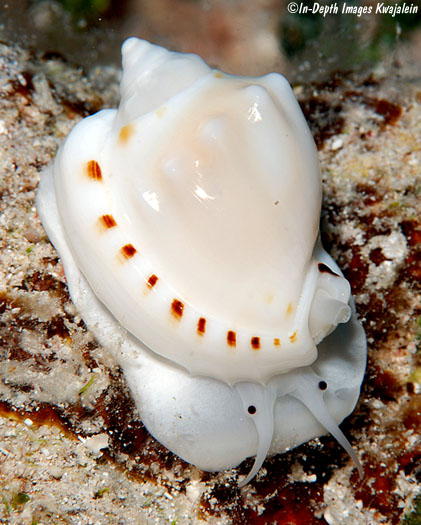
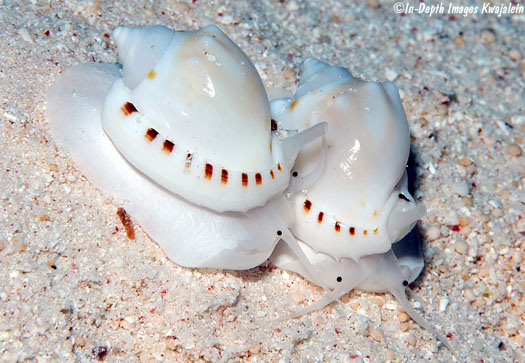
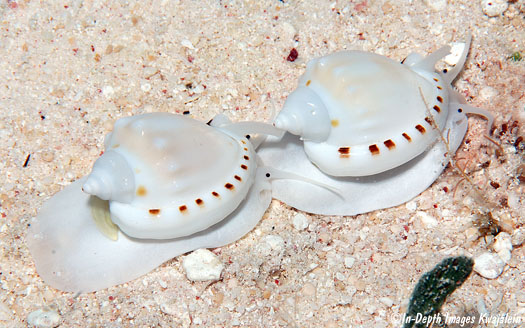
With a darker shell.
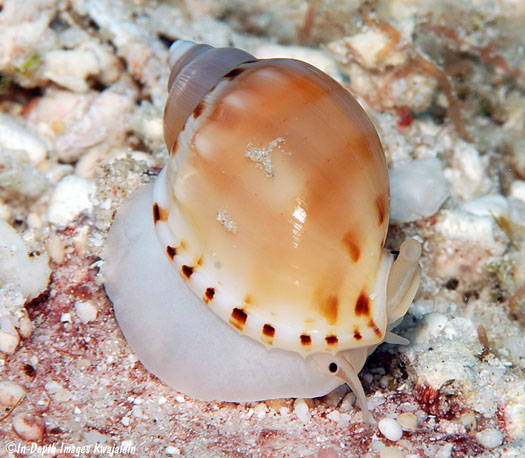
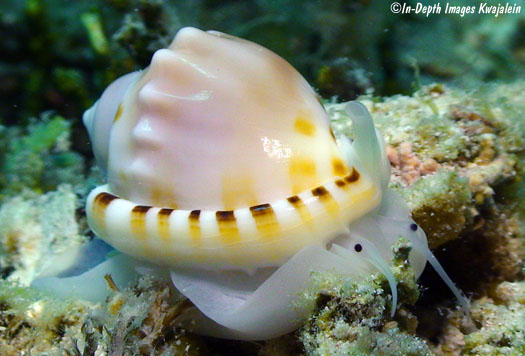
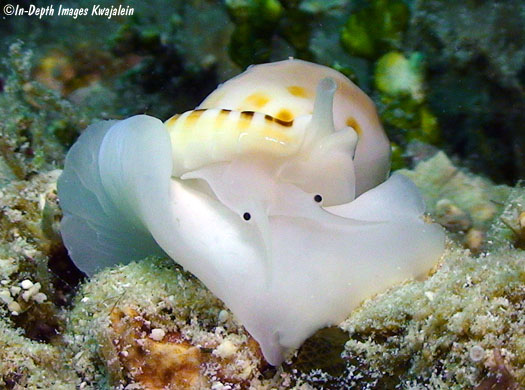
This one is depositing capsules filled with gray eggs on the blade of an algae plant.
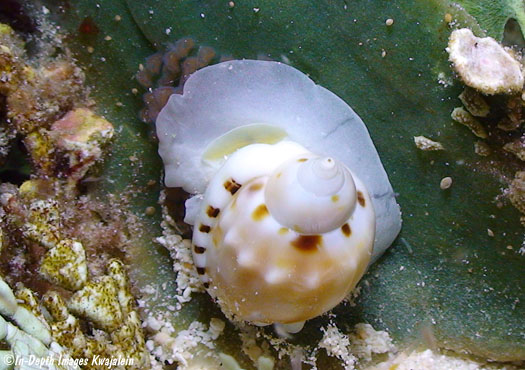
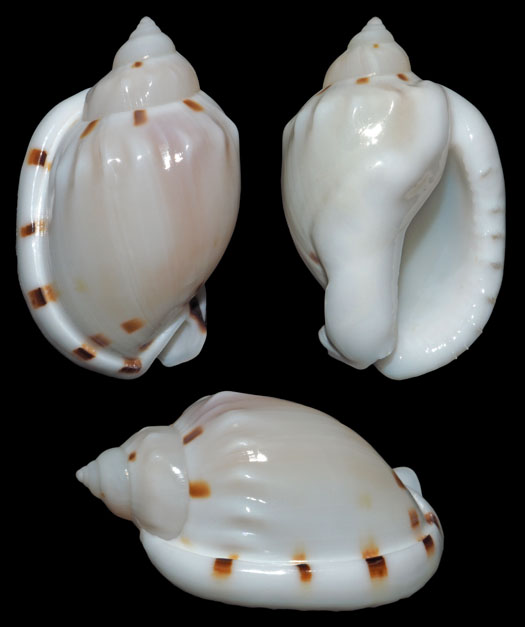
The easiest way to tell C. ponderosa from C. erinaceus is in the pointed teeth along the outer lip; C. ponderosa has teeth along the entire outer lip, while C. erinaceus has only four or five restricted to the anterior end.
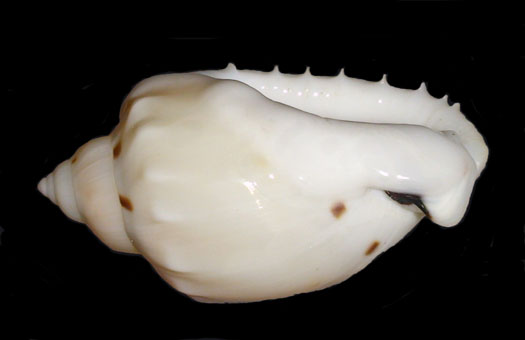
Created 10 January 2011
Updated 25 March 2020